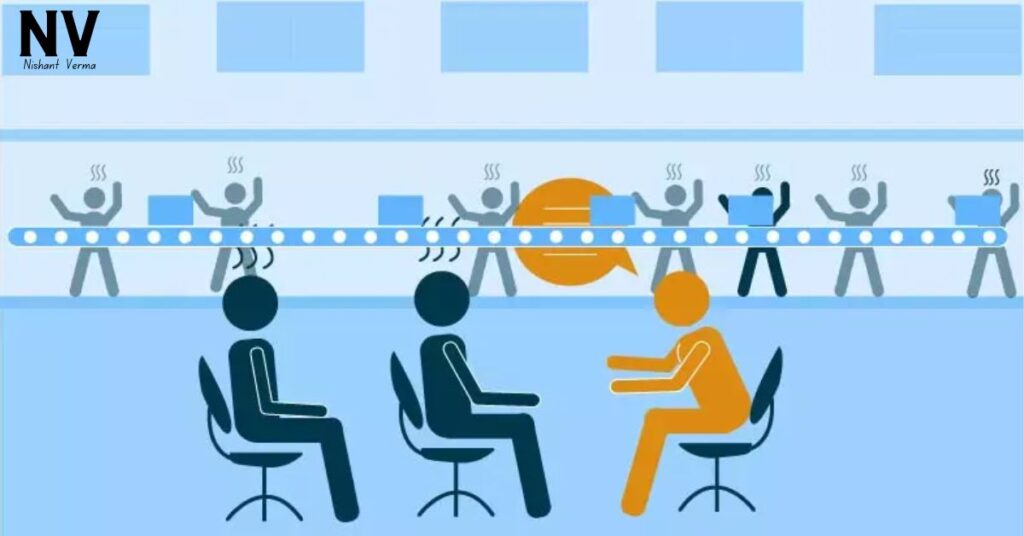In the ever-changing landscape of today’s world, the ability to navigate uncertainty is a crucial skill for leaders. This guide is your companion in understanding changes in adaptive leadership – a dynamic approach to steering through change and thriving in an unpredictable environment. Whether you’re a seasoned leader looking to enhance your adaptability or an aspiring leader eager to learn the ropes, join us on this journey into the realm of adaptive leadership and discover the strategies that empower leaders to flourish in a constantly evolving world.

I. What is Adaptive Leadership?
Defining Adaptability:
Adaptability is the capability to adjust to new conditions and changes. In leadership, being adaptive means embracing change as an opportunity for growth rather than a hurdle.
Understanding Adaptive Leadership:
Adaptive leadership is a flexible and responsive approach that empowers leaders to guide their teams through change. It involves assessing situations, learning from them, and adjusting strategies accordingly.
The Importance of Adaptability:
In today’s fast-paced world, where change is constant, adaptability is crucial for the success of leaders and organizations. Leaders who can adapt effectively foster innovation, resilience, and sustained success.
II. Characteristics of changes in adaptive leadership
Open-Mindedness:
Adaptive leaders are open to different perspectives and ideas. They recognize that innovation often comes from diverse viewpoints, encouraging creativity within their teams.
Resilience:
Resilience is a key characteristic of adaptive leaders. They bounce back from setbacks, learn from failures, and maintain a positive outlook even in challenging situations.
Effective Communication:
Adaptive leaders communicate openly and transparently. Clear communication fosters trust and ensures that team members are well-informed about changes and the reasons behind them.
Decision-Making Agility:
Adaptive leaders make decisions quickly and efficiently. They understand that in a dynamic environment, indecision can hinder progress, and they are comfortable making informed decisions on the fly.
III. Adaptive Leadership in Action
Assessing the Need for Change:
Adaptive leaders constantly assess the need for change by staying attuned to internal and external factors. They recognize when adjustments are necessary to align with organizational goals.
Learning from Feedback:
Adaptive leaders actively seek feedback from team members and stakeholders. Feedback is treated as a valuable source of information that guides adjustments and improvements.
Encouraging Innovation:
Innovation is a hallmark of changes in adaptive leadership. Leaders create a culture where team members are encouraged to think creatively and propose innovative solutions to challenges.
Empowering Teams:
Adaptive leaders empower their teams to make decisions and contribute to the adaptation process. This fosters a sense of ownership and accountability among team members.

IV. Challenges of Adaptive Leadership
Resistance to Change:
One of the primary challenges of changes in adaptive leadership is overcoming resistance to change. Leaders must address concerns, communicate the benefits of change, and create a supportive environment.
Balancing Stability and Flexibility:
Striking the right balance between stability and flexibility is crucial. While adaptability is key, leaders must also provide a stable foundation to avoid overwhelming their teams.
Maintaining Morale:
Constant change can impact team morale. Adaptive leaders prioritize communication, transparency, and support to maintain a positive and motivated workforce.
V. Real-World Examples of Adaptive Leadership
Satya Nadella (Microsoft):
Satya Nadella’s leadership at Microsoft is marked by his adaptive approach. Under his guidance, Microsoft successfully shifted its focus to cloud computing and embraced a culture of continuous learning and innovation.
Angela Ahrendts (Formerly at Burberry and Apple):
Angela Ahrendts, known for her leadership at Burberry and later Apple, demonstrated changes in adaptive leadership by revitalizing Burberry’s brand and embracing digital transformation at Apple’s retail division.
Jeff Bezos (Amazon):
Jeff Bezos, the founder of Amazon, exemplifies adaptive leadership. Amazon’s success can be attributed to its ability to constantly adapt to market changes, customer preferences, and technological advancements.

VI. Building changes in adaptive leadership Skills
Continuous Learning:
Adaptive leaders are lifelong learners. They actively seek opportunities for professional and personal development, staying informed about industry trends and emerging technologies.
Embracing Change as a Learning Opportunity:
Instead of fearing change, adaptive leaders view it as a learning opportunity to learn and grow. They encourage their teams to adopt a similar mindset, fostering a culture of resilience and curiosity.
Cultivating Emotional Intelligence:
Emotional intelligence is crucial for changes in adaptive leadership. Leaders who understand and manage their emotions effectively can navigate change with empathy and build strong, collaborative teams.
Strategic Risk-Taking:
Adaptive leaders are willing to take strategic risks. They assess potential risks and benefits, make informed decisions, and understand that calculated risks are often necessary for progress.
VII. Overcoming Obstacles with Adaptive Leadership
Communicating a Vision:
Leaders must communicate a compelling vision that inspires and motivates their teams. A clear vision provides direction and purpose, helping overcome resistance to change.
Creating a Culture of Adaptability:
Adaptive leaders cultivate a culture where adaptability is not only encouraged but celebrated. This involves recognizing and rewarding innovative thinking and embracing a mindset of continuous improvement.
Providing Support during Transition:
During periods of change, leaders must provide support to their teams. This includes offering resources, addressing concerns, and ensuring that team members feel supported throughout the transition.
VIII. Future Trends in Adaptive Leadership
Digital Transformation Leadership:
The rise of digital transformation will require adaptive leaders who can navigate technological advancements, embrace innovation, and guide their organizations through digital disruptions.
Remote and Hybrid Work Leadership:
The evolving landscape of remote and hybrid work leadership will demand adaptive leaders who can effectively lead distributed teams, leverage technology for collaboration, and maintain team cohesion.
Global Leadership:
As organizations operate on a global leadership scale, adaptive leaders will need to navigate diverse cultures, regulatory environments, and market dynamics, requiring a heightened level of cultural intelligence and adaptability.
Conclusion
Adaptive leadership is not just a skill; it’s a mindset that empowers leaders to thrive in an ever-changing world. As you embark on your leadership journey or seek to enhance your adaptive skills, remember that adaptability is not about avoiding challenges but about facing them with resilience, learning, and a commitment to growth. So, step into the realm of changes in adaptive leadership where change is not a hindrance but a catalyst for progress, and watch as you and your team navigate the dynamic landscape with confidence, innovation, and a shared sense of achievement.




